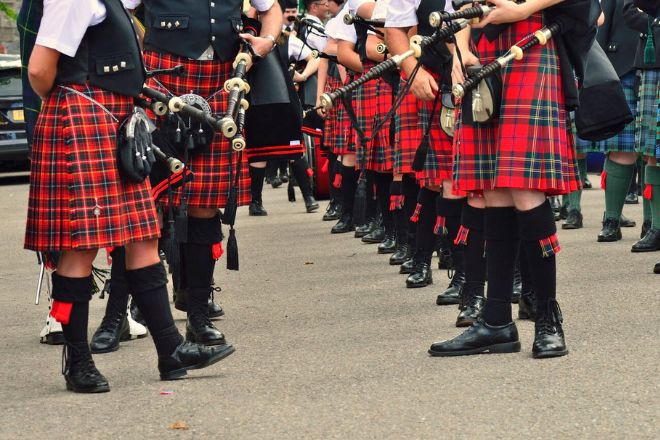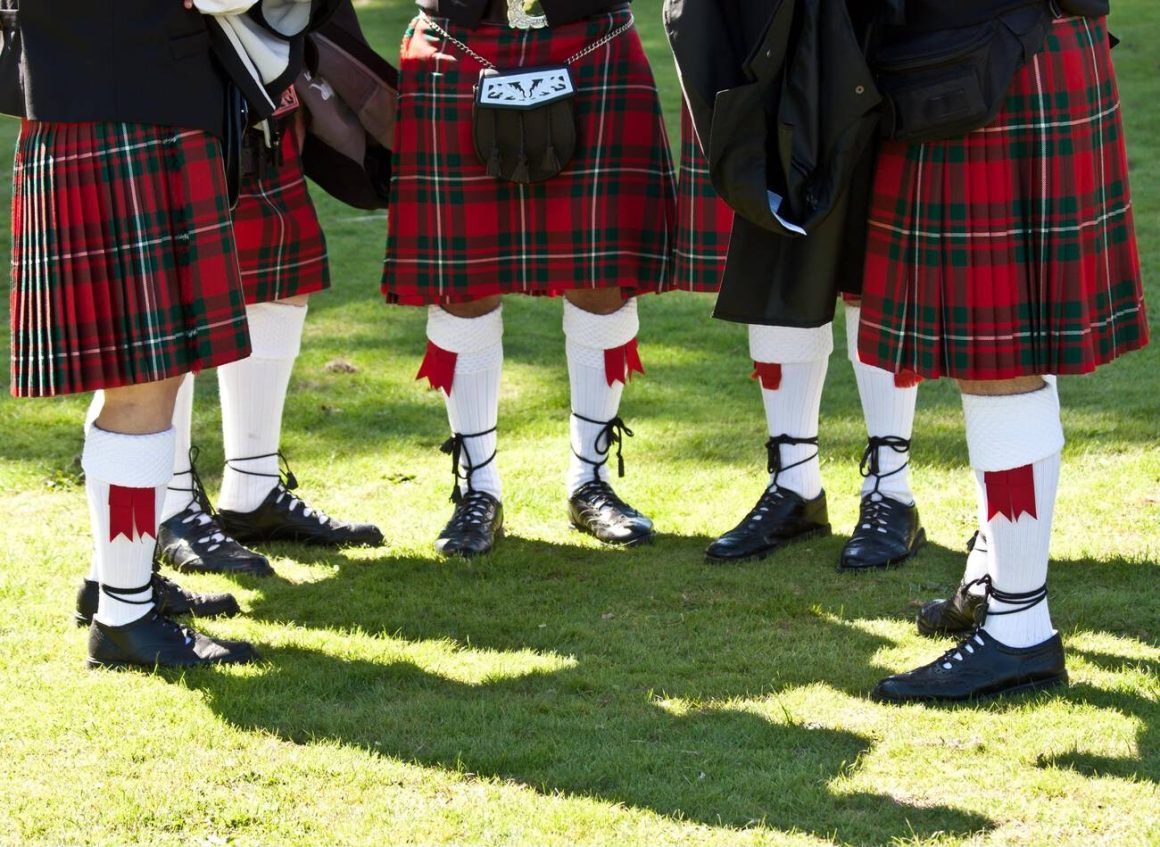
If you like Scottish fashion, you probably have to choose between a sett and a stripe pattern for your kilt. It can be difficult to choose between the two options because each has its own distinct appeal. In this blog, we will discuss the differences between sett and stripe patterns and assist you in making a well defined and decent choice. First, let’s have a look at the Sett pattern
Okay, so as we know that the concept of pleats is just one way to address the different patterns and identify their clans. When it comes to fabrics with sett and stripes, there is a rich history and tradition that comes with each distinct pattern. Sett refers to the small repeating patterns in the fabric, often seen in tartan or plaid fabrics. Each pattern represents a particular clan or family in Scottish tradition, and by wearing a particular pattern, one can show their allegiance and heritage, and there are more than 1400 Scottish clan tartans or even more. Pleats are a practical way to showcase these patterns, as they allow the fabric to be arranged in a way that shows off the sett or stripe in its full glory. Whether it’s a Traditional Kilt or a modern skirt or dress, pleats can add dimension and interest to any fabric with a distinct pattern.
The sett pattern is the most traditional and commonly used pattern for kilts. It is a pattern that consists of a repeated design, typically made up of lines and squares. The pattern is created by weaving different colours of thread together on a loom, resulting in a unique design that is specific to each tartan.
One of the main advantages of the sett pattern is that it is versatile and can be used for a variety of occasions. It is a classic and timeless design that is perfect for formal events, such as weddings or black-tie events. It also works well for casual wear and can be worn with a variety of different shirts and jackets.
The stripe pattern is a more modern take on the kilt design. It is a pattern that consists of vertical stripes that run the length of the kilt. The stripes can be any width or colour, and they can be spaced out evenly or irregularly.
One of the main advantages of this pattern is that it is bold and eye-catching. It is also perfect for those who want to make a statement with their kilt and stand out from the crowd. It is also a great option for those who want to incorporate a modern twist into their traditional Scottish attire.
Basically it’s all all about the pleats and how you put them is the total game changing process. Like so, Pleating to the sett and pleating to the stripe are two different methods of pleating fabric.
On one hand, Pleating to the sett is a method where Setting a kilt involves aligning the pattern of the tartan seamlessly through the pleats, creating a visually consistent appearance between the front and back. It is the preferred method for crafting a kilt and requires a skilled kiltmaker to match the pattern precisely. The size of the pattern chosen for the tartan impacts the number of pleats required, with a good kilt maker able to determine the optimal number for each individual. Typically, between 25 to 34 pleats are needed for an average-sized man to achieve a balanced look, as anything more or less can compromise the width and aesthetic appeal of the pleats.
On the other hand, Striping a kilt involves creating identical pleats with a vertical Tartan stripe at the centre of each pleat, resulting in a distinct appearance between the front and back of the garment. This method was commonly used in military kilts to create a uniform and striking effect. It is also a more cost-effective approach as it allows for more pleats per metre of fabric in certain Tartans. In modern times, some schools opt for alternating colours in the pleats to minimise fabric usage. Overall, striping is a technique that offers a unique and visually appealing variation to the traditional sett method of kilt-making.
All in all, The main difference between pleating to the sett and pleating to the stripe is the alignment of the pleats with either the threads in the fabric or the stripes in the fabric.
The choice between these patterns ultimately comes down to personal preference and the event for which the kilt will be worn. A sett pattern would be the best choice if you are going to a formal event like Wearing a Kilt to a Wedding or other formal event. It is a timeless style that will never go out of style and will always appear sophisticated and elegant.

A stripe pattern, on the other hand, is a better option if you’re going to a more casual event or just want to wear your kilt to make a big statement. It’s a sleek, contemporary design that will make you stand out from the crowd and attract attention. Whether you choose a sett or a stripe pattern for your kilt, you can be sure that you are representing the rich history and culture of your country and heritage. Both patterns have their own unique appeal, and whichever one you choose, you can be sure that you will look and feel great in your Scottish attire.
Sett kilts have repeated square patterns, while stripe kilts have vertical stripes, and the choice between them is often a matter of personal preference or clan tradition.
The Scottish pattern on kilts typically refers to tartan, a distinctive woven textile pattern that features stripes and blocks of different colors and widths.
Sett pleating is a traditional kilt pleating method where each pleat shows a complete pattern repeat, resulting in a seamless and uniform look.
The Royal Stewart Tartan is commonly associated with Scottish royalty and is often used for formal occasions, making it a well-known and esteemed tartan pattern. And this is oftenly considered as the most prestigious tartan pattern
Input your search keywords and press Enter.
